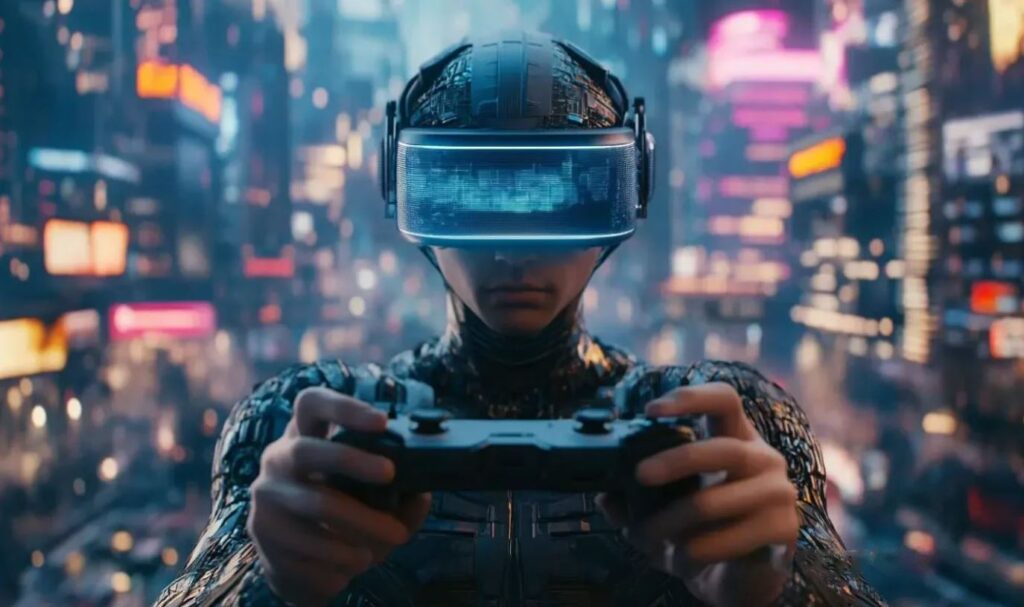Web3 gaming has faced skepticism in recent years, but the industry is undergoing significant transformations in gameplay mechanics, reward structures, and inclusivity. As a result, GameFi is emerging stronger than ever.
This shift isn’t just theoretical; it’s backed by impressive statistics. In the second quarter of 2024, blockchain gaming projects attracted a remarkable $1.1 billion in investment, a staggering 314% increase from the previous quarter. This positive trend is largely due to the growing adoption of web3 games, which now account for 28% of all decentralized application (dApp) activity.
From Niche to Mainstream
Web3 gaming is no longer a passing trend. Blockchain technology has become an essential asset for the gaming industry, primarily because it offers true ownership. Players can now own in-game assets—such as skins and characters—creating real value that transcends individual titles. Unlike traditional Web2 games, where in-game purchases remain confined to a game’s ecosystem, blockchain enables genuine asset ownership and secure transactions, allowing players to trade or sell items across platforms.
Investors have taken notice of this shift. The substantial capital influx in Q2 2024 signals that investors are searching for games with long-term value—where blockchain mechanics enhance gameplay rather than detract from it. This transition marks a new phase for GameFi, emphasizing sustainable ecosystems over short-term speculative gains.
Simplifying Web3 Adoption
For blockchain gaming to gain mainstream traction, it must eliminate the complexities often associated with web3 mechanics. Many gamers unfamiliar with this space view features like wallets, NFTs, and tokens as barriers rather than enhancements. The key is to ensure that games are enjoyable first and foremost, with blockchain elements adding layers of opportunity without complicating the experience.
Successful blockchain games integrate the underlying technology seamlessly, allowing players to trade and own digital assets without needing to understand the technical details. As developers increasingly prioritize ease of use, web3 gaming will likely attract players who previously dismissed it as too complex.
The Future of GameFi: A Long-Term Vision
As the market matures, the focus is shifting away from play-to-earn models toward competitive and engaging gaming experiences. Many early P2E projects failed due to unrealistic tokenomics and shallow gameplay. The lesson learned is crucial: games should prioritize enjoyable gameplay, with blockchain providing rewards and ownership as secondary benefits.
At Farcana, we’ve embraced this shift by rebranding from a P2E model to a “Bitcoin Shooter,” where players earn Bitcoin by mastering gameplay rather than simply participating. This approach fosters true investment and skill development, moving away from the profit-seeking behaviors that characterized earlier GameFi projects.
Interoperability and Cross-Platform Potential
A promising direction for GameFi is interoperability, enabling assets to be transferred between games, platforms, or even blockchains. This compatibility could revolutionize gaming, allowing players to use items obtained in one game in another. Blockchain technology is already paving the way for these developments.
This trend will be key to driving GameFi adoption globally. Games can no longer exist as standalone experiences; players expect their investments to hold value across different platforms. Developers focusing on interoperability will capture the attention of both gamers and investors, unlocking new monetization avenues.
Security and Player Trust
As GameFi grows, security remains paramount. Many web3 gaming projects that emerged post-2021 struggled due to security vulnerabilities. Blockchain offers solutions to traditional online gaming security issues like fraud and item theft. Its immutable ledger ties assets to players rather than individual games, protecting investments even if a game fails.
This capability fosters a trust-based ecosystem, essential for mainstream adoption. Players need confidence that their in-game assets are secure, even if a game goes offline. When implemented effectively, blockchain security protocols provide this reassurance.
Looking Ahead
The future of gaming is clearly leaning toward the integration of web3 technology as a standard feature. Mass adoption is on the horizon, but it will require strategic investment, seamless integration, and a commitment to engaging gameplay.
New projects must recognize that success isn’t merely about quick profits; it’s about crafting immersive worlds where blockchain enhances rather than complicates the player experience. The path to growth lies in balancing fun and accessibility while integrating blockchain elements—an equilibrium that will usher in the next generation of gaming.


Thank You very much